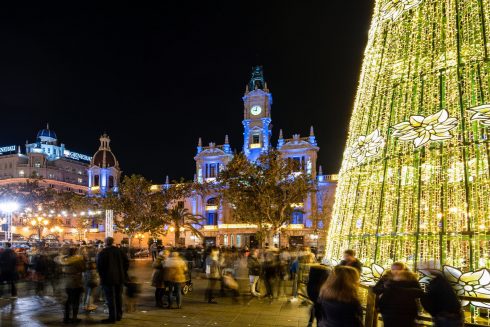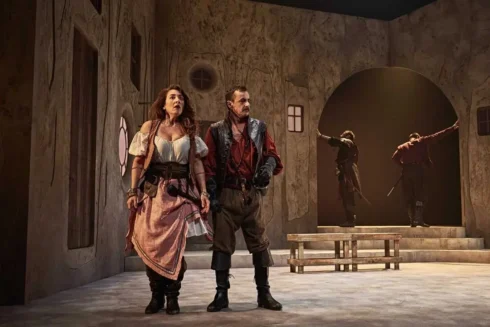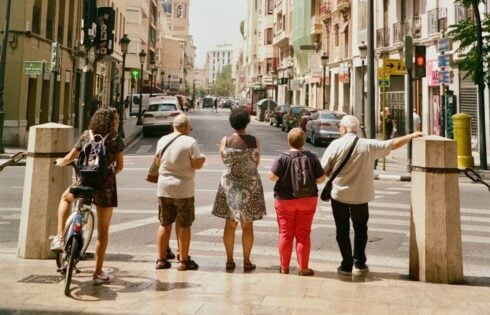“DON’T go in,” a blonde woman with a broad English accent told me.
“If you go in there, you will hear their grunts of pain and smell their blood as they die.”
She was holding a banner outside Marbella’s nondescript Plaza de Toros which read ‘For a feria with no blood.’
“Surely you’re not thinking of supporting this cruel, brutal sport are you?” a more militant, German-sounding woman demanded.

The small number of collected protesters who had bravely gathered outside the event – all women and most foreign – looked at me expectantly. Unfortunately, I was.
Animal rights activists were understandably aghast when it was announced that Marbella would hold its first bullfight in nine years this month during its historic San Bernabe fair.
It was a war they thought they were winning. Data from Spain’s Ministry of Culture showed a steady decline in the number of bullfighting-related events between 2009 and 2019.

However since Covid, there has been the most extraordinary, unlikely turnaround.
The number of corridas (bullfights) has actually exceeded pre-pandemic figures, standing at 1,546 in 2022 – greater even than in 2018.
In Marbella, the sudden volte-face was largely prompted by the election of two new Vox councillors to the town hall, who put the dwindling Spanish tradition back on the agenda.
And as I stood chatting with the protestors, listening carefully to their arguments, thousands of well-dressed Spaniards streamed into the plaza between a heavy police presence.

Some of the more fanatical punters even took the opportunity to remonstrate with the protestors, who were growing in number as the hour of the fight approached. But most just smiled and ignored them.
Under their stern gaze of disapproval, I made my way into the buzzing, bowl-shaped arena.
On the ticket tonight were the toreros Jose Maria Manzanares, Andres Roca Rey, and Alejandro Talavante. A trio of Premier League matadors, who’ll often, I’m told, earn over €100,000 per fight.
I walked into an impressive arena (although not a touch on the giants like Ventas in Madrid, or Ronda’s bull ring) and was immediately caught up in the ambience.

The stage was set by the continuous music from the brass band in the upper reaches as Marbella’s bullfighting aficionados got their first taste of a corrida in their city for almost a decade.
I was not sure what to expect – would I be dazzled by the skill and bravery of the toreros, or horrified by the choreographed brutality? In the end it was a little of both.
The order of events has been set in stone over centuries.

The first bull came charging into the arena and immediately made for the dancing, agile banderilleros (the matador’s usually svelte assistants), who dashed to the safety of wooden barriers.
Then emerged the picador – a lance-wielding bullfighter mounted on an armoured and blindfolded horse.
The black beast charged and crashed into the side of the poor horse – one of the few creatures on this planet able to withstand the rage of a bull.
In return for its efforts, the picadors drew the first blood, gouging their giant picas into the bull’s neck muscles.

This reduces the bull’s ability to raise its head, making it easier for the matador to administer the coupe de grace later on.
Once softened up by the picadors, the banderillero takes centre stage.
Brandishing two sharp barbed sticks (the banderillas), he enticed the bull to charge, skipped out of its path and plunged his weapons into its shoulders.
It took guts and it took skill. Certainly more so than the picadero, safe atop his horse.

Now the blood was really starting to flow. But I could not smell it from my position in the mid-upper reaches.
Whilst clearly suffering, the bull, eager as it was to get its horns into its tormentors, neither grunted nor squealed in pain.
The torture and horror was far less visceral than I had anticipated, and I could see how the spectators could just not dwell on it and enjoy the show.
From my vantage point in the upper reaches, one had to choose to stop and reflect on what the bull was going through. Perhaps it was more immediate for those closer to the ring.





But these people did not want to be confronted with inconveniences such as suffering for their entertainment.
On with the show. Finally came the matador – the star of the show.
Manzanares used the iconic muleta – a smaller red cloth draped over a wooden stick – to perform a series of artistic passes with the bull, whose anger was clearly starting to be replaced by confusion and frustration.
When the time came, the bullfighter killed it with a sword – known as the estocada – between its shoulder blades.

It went in neatly and deep and the crowd leapt to their feet clapping.
But the beast did not die straight away. First it staggered around. The assembled team waited for it to die and wondered if they would need to help it – an undesired outcome, so we were made to hold our breaths
Eventually it dropped to the floor and fell onto one side, without a sob or a cry. It was dead.
The crowd, who had been rapt in hushed silence after their initial clap, exploded again in appreciation of cheers, whoops and clamour. All heads turned to el presidente of the bullfight sitting in the VIP box behind me to the left.
Like awaiting the thumb of the emperor in Roman times, this is the man who decides the somewhat barbaric awarding system.

As the crowd whooped and cheered, he decided to award Manzanares one ear – which signified a good performance. But he apparently fell down on points due to the speed of death.
A woman known as the mozo de espadas cut off the bull’s ear and handed it to the matador, who threw it up into the stands and into the hands of a young boy.
And that was the pattern for the next five bulls, with one of the trio of executioners landing two ears and even the severed tail.
The crowd would groan if a bull stumbled early on, or did not show enough fight and aggression.
Although they want a strong bull to put up a good fight, they don’t want a fair fight.

There obviously is skill and risk to the sport – Mexican bullfighter Isaac Fonseca was badly gored in the back just two weeks ago in Madrid. He spent a week in hospital.
It is an outcome that secretly delights the crowd as well.
It is a lust for blood, a lust for bravery and a lust for tradition that has taken centuries to accrue into a culture that binds the people together.
It’s very difficult to untangle, even if the roots are seeped in cruelty.
But am I now a bullfighting convert? No.
Click here to read more Spain News from The Olive Press.








